BOUTIQUEResouces
Nucleic acid stains are indispensable reagents in molecular biology experiments. Among them, ethidium bromide (EtBr) has long been used as a standard stain for nucleic acid staining due to its high sensitivity. However, EtBr has potential mutagenic and carcinogenic effects: it can intercalate into DNA, cause cell mutations, and long-term exposure may have adverse effects on human health. The new MIDORIGreen series of nucleic acid stains launched by NIPPON GENETICS is a non-carcinogenic and non-mutagenic stain that cannot penetrate latex gloves or cell membranes. Meanwhile, both the mutagenicity test (Ames test) and cytotoxicity test results are negative, making it a nucleic acid stain with high safety [1].
To date, ultraviolet (UV) light and EtBr staining are still used together in molecular biology laboratories for nucleic acid detection. Nevertheless, UV spectroscopy can cause modification and degradation of DNA samples—30 seconds of UV exposure is sufficient to significantly reduce cloning efficiency. Blue/green LEDs emit safe visible light at 470 nm–520 nm; this spectrum is non-destructive to DNA. Compared with UV light, DNA integrity and cloning/sequencing efficiency remain completely unaffected, even under prolonged illumination. The MIDORIGreen series of nucleic acid stains has been optimized to produce brighter signals when excited by UV light or blue/green light, and is also compatible with UV light.
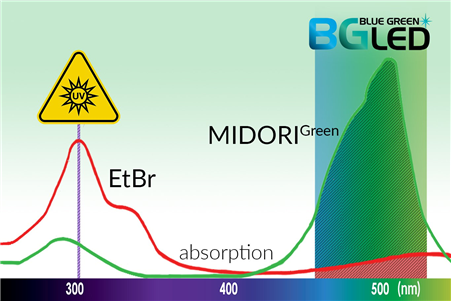
Figure 1: Comparison of Absorption Spectra between EtBr and MIDORIGreen
Product Features of MIDORIGreen
· Excellent signal quality
· Safe nucleic acid stain for in-gel staining and post-staining
· Safe alternative to ethidium bromide (EtBr): non-carcinogenic and non-toxic
· Suitable for staining double-stranded DNA (dsDNA), single-stranded DNA (ssDNA), or RNA
· Compatible with both gel-staining method and soak-staining method
MIDORIGreen Advance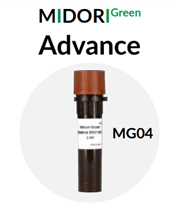
The sensitivity of MIDORIGreen Advance is comparable to that of EtBr, and it can be directly added to molten agarose. Meanwhile, it is compatible with ultraviolet (UV) light or blue/green LEDs, so there is no need to modify the original experimental procedures. MIDORIGreen Advance can be diluted at a ratio of up to 1:25000. Only 4 μL to 6 μL of the dye is required for a 100 mL agarose gel, and 1 mL of the dye can be used to prepare approximately 17 L to 25 L of agarose gel.
MIDORIGreen Direct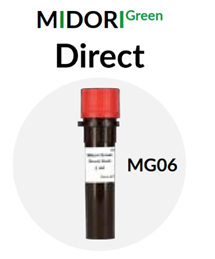
MIDORIGreen Direct already contains 10X Loading Buffer and can be directly added to nucleic acid samples—there is no need to add it or any other dye to the gel matrix. Compared with staining methods that involve adding dye to the gel, direct staining of nucleic acids eliminates background staining and provides an optimal signal-to-noise ratio. 1 mL of MIDORIGreen Direct is sufficient for staining 1,000 to 2,000 samples.
MIDORIGreen Direct delivers better results for downstream applications.
Isolating nucleic acids from agarose gels enables further downstream use. Many dyes, such as EtBr and even SYBR? Green, are strong enzyme inhibitors due to their intercalating properties. In contrast, the way MIDORI Green dyes bind to the DNA backbone supports higher efficiency in downstream applications, including cloning, sequencing, PCR, and more [2].
Figure 2: Compared with EtBr, MIDORIGreen Direct Increases the Number of Transformed E. coli Colonies and Improves Transformation Efficiency
MIDORIGreen Xtra is the latest generation of nucleic acid stain from NIPPON GENETICS. Optimized for blue/green LED and blue LED light sources, it can produce strong fluorescent signals in agarose gels. Meanwhile, MIDORIGreen Xtra does not stain the agarose gel itself, resulting in extremely low background noise and thus an excellent signal-to-noise ratio. The very low background fluorescence makes it much easier to identify small amounts of DNA, so MIDORIGreen Xtra exhibits ultra-high sensitivity.
Figure 3: DNA Bands Detected with MIDORI Green Xtra Exhibit Ultra-High Sensitivity (Note: The left panel was detected using a blue/green LED transilluminator; the right panel was detected using a blue LED transilluminator)
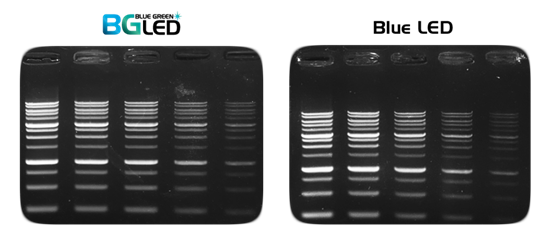
MIDORIGreen easy 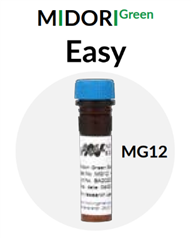
MIDORIGreen Easy has the same excellent signal quality and low background as MIDORIGreen Xtra, and its signal performance is better than that of EtBr. MIDORIGreen Easy is developed to easily replace SYBR® Safe, with no need to modify the staining protocol. It can be diluted at a ratio of up to 1:10000, and only 8 μL to 10 μL of MIDORIGreen Easy is required for a 100 mL agarose gel.
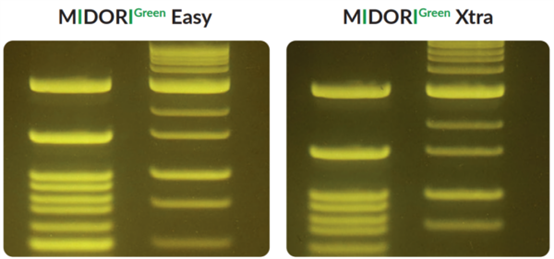
Figure 4: MIDORIGreen easy (Left) and MIDORIGreen Xtra (Right) Using Blue/Green LED Excitation Lamp
Detection Spectrum and Sensitivity of the MIDORIGreen Series
|
Product |
Blue/Green LED |
Blue LED |
UV-Light |
Sensitivity |
|
MIDORIGreen Advance |
√ |
√ |
? |
+ |
|
MIDORIGreen Direct |
√ |
√ |
? |
+ + |
|
MIDORIGreen Xtra |
√ |
√ |
? |
+ + + |
|
MIDORIGreen Easy |
√ |
√ |
√ |
+ + |
Note: "√" indicates compatibility; "?" indicates compatibility but is not recommended.
Product List of the MIDORIGreen Nucleic Acid Stain Series
|
Item Name |
Product Name |
Specification |
|
MG04 |
MIDORIGreen Advance |
|
|
MG06 |
MIDORIGreen Direct (含loading buffer) |
1 ml (10x conc. -可直接添加樣品) |
|
MG10 |
MIDORIGreen Xtra |
1 ml (25.000x -可染色25L凝膠) |
|
MG12 |
MIDORIGreen Easy |
0.4 ml (10.000x -可染色4L凝膠) |

NIPPON Genetics is a company focusing on cutting-edge products for molecular and cell biology laboratories, and it has obtained the certification of the DIN EN ISO 9001:2015 quality management system. Beijing XMJ Technology Co., Ltd. is the authorized distributor of NIPPON Genetics in China. If you are interested in the above-mentioned products, please feel free to send email to info@xmjsci.com or visit the official website www.gq44.cn to learn more product information.

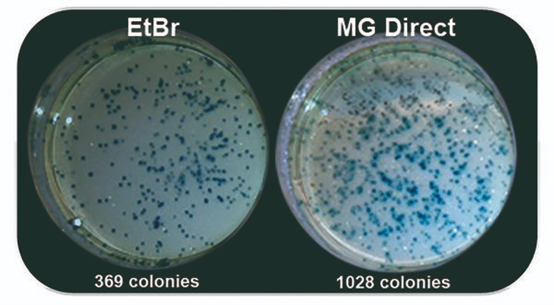
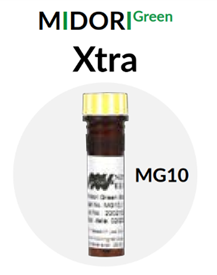

 京公網(wǎng)安備 11010802028692號
京公網(wǎng)安備 11010802028692號